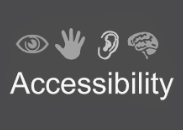It’s been decades when touchscreen devices started to be commonly used with different applications. But it must be agreed on the point that recent advancements in touch-sensing technology have taken it to the next level- making it more functional than ever with smartphones, tablets, human-machine interfaces (HMIs) and other touchscreen devices. A variety of touchscreens- resistive, capacitive, PCAP, SAW touchscreens and more, are integrated into both personal and commercial applications, allowing users to control the device with a touch. It has provided easier and more convenient ways to control devices than using a keyboard, mouse, or other input peripherals.
Among the different types of touch-sensing technology powering touchscreen devices, the most common one is resistive and capacitive. Where resistive touchscreen devices identify touch by pressure, the capacitive touchscreen devices detect touch by measuring and looking for a change in the capacitance value on the touchscreens surface.
In this article, we will talk about Surface Acoustic Wave (SAW) touchscreens- the third most used type of touch-sensing technology, slowly gaining momentum in the touchscreen device market. It is yet another type of touch sensing technology that specific devices are using these days.
SAW Touch-Sensing Technology
SAW touchscreens are an innovative type of touch-sensing technology that detects touch commands with the help of ultrasonic acoustic waves. Devices designed with SAW technology project ultrasonic acoustic waves across the display surface and touchscreen interface, which are invisible to the naked eyes. However, when you touch the surface of the screen, it disturbs the otherwise uniform ultrasonic waves. Technically what happens, your finger — or a stylus — absorbs some of the device’s ultrasonic waves. As a result, the device becomes able to pinpoint the location of your touch as it determines where the ultrasonic wave is missing or weak.
Benefits of SAW
Although SAW touchscreens are not as common in the touch-sensing market as other technologies, several applications integrate SAW in their devices for several reasons.
First, SAW touchscreen devices offer superior image quality. The display is clear, detailed and allows high resolution. This is because there are no traces or conductive coatings or air gaps within the sensor substrate. It’s just clear glass. All the emitting and sensing componentry are at the perimeter of the sensor out of the viewable area. SAW touchscreens become the perfect choice for applications where display quality is crucial. This is especially important for applications like gaming.
Second, SAW touch sensors are highly responsive. A SAW device typically responds to the user’s touch command within 20 ms. It means you won’t find any noticeable lag or delay from the moment you touch the device.
Finally, contrary to capacitive touchscreen, which only works with a bare finger or special capacitive stylus, devices with SAW touchscreens can be operated with a bare finger, a gloved finger or an acoustic absorbing stylus.
These reasons have made SAW touchscreens the preferable choice for many touch applications. However, when it comes to choosing the best manufacturer, you should strongly consider A D Metro. They offer superior quality SAW touch technology as well as many other types and with 28 years in the business, they can assist you in making the right choice for your application.







